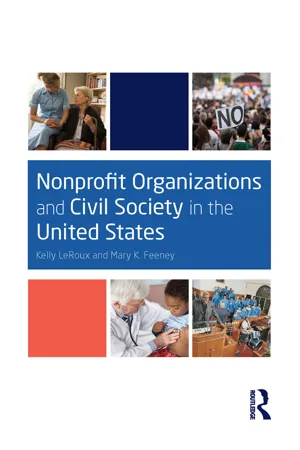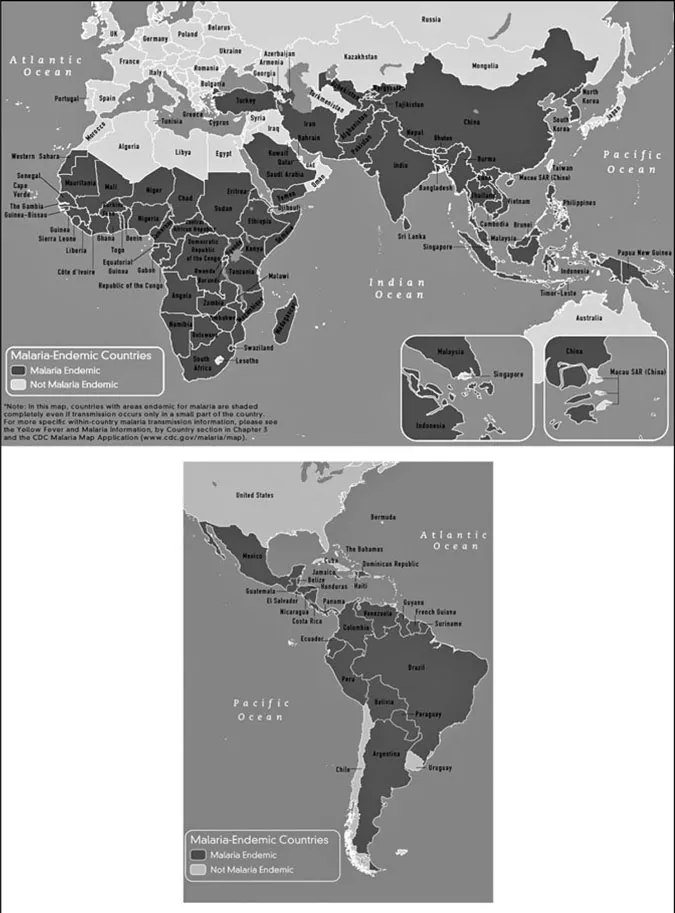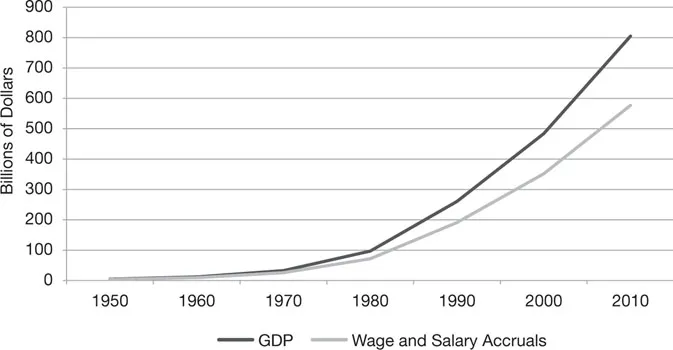
eBook - ePub
Nonprofit Organizations and Civil Society in the United States
This is a test
- 372 pages
- English
- ePUB (mobile friendly)
- Available on iOS & Android
eBook - ePub
Nonprofit Organizations and Civil Society in the United States
Book details
Book preview
Table of contents
Citations
About This Book
LeRoux and Feeney's Nonprofit Organizations and Civil Society in the United States makes a departure from existing nonprofit texts on the market: rather than focus on management, it focuses on nonprofit organizations and their contributions to the social, political, and economic dimensions of society. The book also covers the nexus between nonprofits and civil society. This text offers a theory-oriented undergraduate introduction to the nonprofit field and an examination of the multifaceted roles these organizations play in American society.
Frequently asked questions
At the moment all of our mobile-responsive ePub books are available to download via the app. Most of our PDFs are also available to download and we're working on making the final remaining ones downloadable now. Learn more here.
Both plans give you full access to the library and all of Perlego’s features. The only differences are the price and subscription period: With the annual plan you’ll save around 30% compared to 12 months on the monthly plan.
We are an online textbook subscription service, where you can get access to an entire online library for less than the price of a single book per month. With over 1 million books across 1000+ topics, we’ve got you covered! Learn more here.
Look out for the read-aloud symbol on your next book to see if you can listen to it. The read-aloud tool reads text aloud for you, highlighting the text as it is being read. You can pause it, speed it up and slow it down. Learn more here.
Yes, you can access Nonprofit Organizations and Civil Society in the United States by Kelly LeRoux, Mary K. Feeney in PDF and/or ePUB format, as well as other popular books in Social Sciences & Sociology. We have over one million books available in our catalogue for you to explore.
Information
ACKNOWLEDGMENTS
This book would not have been possible without the initial inspiration of Kate Pravera. Kate is the Academic Director for the School of Continuing Studies and has dedicated countless hours to developing the curriculum for nonprofit studies at the University of Illinois at Chicago (UIC). She has worked with graduate students, undergraduate students, and practitioners to share her enthusiasm for the nonprofit sector and public service. Kate played a critical role in identifying the need for this textbook, pitching the idea to Routledge, and encouraging us to develop it. We are thankful for her encouragement and contributions in the early stages of this project.
We are also thankful for the support and enthusiasm of the many UIC students who served as test subjects as we piloted early drafts of the book's chapters. In particular, we would like to thank the students enrolled in Dr. LeRoux's PA 230 class in Fall 2013. We appreciate your patience in reading unedited versions of the chapters and your thoughtful feedback about the content, exercises, and presentation of the material. We would also like to thank Cecilia Tobias for supplying the Reddit example in Chapter 10.
We also owe thanks to the many reviewers who took the time to carefully read, comment upon, and critique each chapter of the draft manuscript:
| Al Lyons | Indiana University-Purdue University Indianapolis |
| Bruce Sievers | Stanford University |
| David Campbell | Binghamton University |
| Ken Menkhaus | Davidson College |
| Rebecca Nannery | Indiana University |
| Katie Korkosz | University of Central Florida |
| Victoria Johnson | University of Michigan |
| Jennifer Shea | San Francisco State University |
| Robert Rycroft | University of Mary Washington |
| Charles Epp | University of Kansas |
| Carl Milofsky | Bucknell University |
| Heath A. Brown | Seton Hall University |
| Laurance Geri | Evergreen State University |
| Donald Ritzenheim | Eastern Michigan University |
Along with our students’ input, we took the reviewers’ feedback seriously and incorporated many valuable suggestions. All of the feedback we received along the way helped to improve the book and enhance the quality of the final product.
Finally, we owe a huge debt of gratitude to Julie Langer, a fantastic PhD student in the UIC Department of Public Administration, who provided unending support and cheer while reading draft chapters, developing tables, sorting through data, and responding to our many requests. Not only did Julie perform all the typical organizational tasks of a graduate assistant, we were fortunate to also have such a bright mind to bounce ideas off, share examples, and offer critiques. We are certain Julie is on her way to becoming an excellent scholar, and we know that her future colleagues and students will be equally lucky to work with her.
I Introduction to the Nonprofit Sector & Civil Society
1 Defining the Nonprofit Sector and Civil Society
DOI: 10.4324/9780203073438-1
CHAPTER LEARNING OBJECTIVES
By the end of this chapter, students will be able to:
- Identify various terms used to describe the nonprofit sector
- Define civil society and its relationship to the nonprofit sector
- Describe the major subsectors, or groups of organizations, that make up the US nonprofit sector
- Describe general patterns of growth within the US nonprofit sector
- Identify the key characteristics that make nonprofit organizations different from public and for-profit organizations
- Identify characteristics that nonprofit organizations share in common with public and for-profit organizations
Introduction
Whether it involves chaperoning a child's field trip to the zoo, attending weekly church service, participating in a workplace blood drive, or attending class at a private college or university, Americans interact with the nonprofit and civil society sector in numerous ways in the course of their daily routines, often without realizing it. With nearly 1.6 million registered nonprofits in the US today,4 these institutions are playing increasingly important roles not only in American society and culture, but throughout the world. In addition to these registered, or formal, organizations there are tens of thousands of unregistered groups, clubs, churches, associations, coalitions, and initiatives, some of which operate on a strictly voluntary basis, without any paid staff. These unregistered organizations exist alongside, and sometimes in partnership with the registered organizations. Together, these registered and unregistered organizations constitute the nonprofit and civil society sector. The organizations and activities of this sector shape the social, political, and economic dimensions of American life in vital ways. While we will soon examine the definition of nonprofit organizations and civil society in detail, it will be noted here that the terms are often used interchangeably. However, civil society carries a somewhat broader meaning, referring to organizations and action initiated by citizens, outside of government and the market, along with the laws, norms, and customs that enable citizen-driven organizations and action.
In helping to create the social fabric of American life, nonprofit and civil society organizations provide spaces for people with common interests to associate, network, and volunteer. Sometimes nonprofit and civil organizations enable people with similar values to come together to share experiences, for example a community church or a cultural group like the Polish American Association. In other cases, nonprofits aim to solve a social problem or provide support to a group of people, for example Children of Lesbians and Gays Everywhere (COLAGE). In other cases, nonprofit organizations are distinguished by their service to communities, for example the Children's Hospital of Denver, or the Central Austin Neighborhood Association serving one of Chicago's very low-income neighborhoods. Other nonprofit organizations play an integral part in politics and policy-making at all levels of government by raising public awareness of salient issues, lobbying for legislation or public funding for important causes, and mobilizing citizens to vote, contact their elected officials, and participate in protests. For example, consider the Rock the Vote movement which works to increase voter participation among youth, or the National Organization for Rare Disorders, which lobbies to raise awareness and get government funding allocated to researching rare illnesses.
INVESTING IN A CURE FOR MALARIA: WHO SHOULD PAY FOR IT?
According to a recent article, “Bill Gates has declared capitalism ‘flawed’ because it channels more resources to curing minor ailments such as male baldness than to addressing the diseases that destroy millions of lives every year”.1 Why do we spend more in the United States on research to cure androgenetic alopecia, or male pattern baldness, than to eradicate malaria, a preventable and curable disease?
The answers, though not necessarily reassuring, are clear. The US spends more on research for male pattern baldness because (1) in the US male pattern baldness is more prevalent than malaria, (2) male pattern baldness is more common among people with financial means than is malaria, (3) there is a market for the treatment of male pattern baldness (e.g. there are people who want the medication/treatment and will pay for it), and finally (4) malaria is not generally considered an American problem— it mostly affects people outside of the US.
“What?!” you cry. “But I live in the US and I care about people dying from malaria. I want scientists to develop a vaccine for malaria. I think we should prevent malaria, and when it occurs, I want those who are sick with malaria to be treated.”
That may be what you want. That may be what many of us want. But are you willing to pay for it? Are all Americans willing to pay for it? Should a portion of every American's taxes pay to invest in research for a malaria vaccine and support the treatment of malaria victims in Africa and Pakistan?
Alternatively, maybe the government shouldn't pay for this. So, let's turn to the private, for-profit sector. Maybe there is a pharmaceutical company that is willing to invest millions of its own profits to develop a malaria vaccine and treatment. But, once they have developed those drugs, who will buy them? Not Americans, as they don't suffer from malaria. Can the pharmaceutical company rely on those with malaria in Afghanistan, Pakistan, and parts of Africa and South America to buy these drugs— and to buy enough to make back the costs of the research and development (R&D) and turn a profit? Or should pharmaceutical companies invest in research to cure male pattern baldness and then sell that cure to Americans who are willing and able to pay for it? (Note: 35 million men in the US are affected by male pattern baldness.)2
Do you see the problem here? It is a market failure and a government failure. Market failure refers to the fact that there is not a private market for malaria R&D in poorer nations—there is not enough demand for investment and consumers lack the ability to pay for the treatment. It is a government failure because malaria is a public health problem, something that requires government investment because it is expensive and affects all of society. But, it also affects parts of the world where many governments lack the resources and capacity to invest in the science and market distribution required to eradicate the disease. Those governments that can afford to eradicate the disease (e.g. the US, UK, France, etc.) have already eradicated it at home, but lack the political will to tax their own people to fight the disease worldwide.

Who will invest in developing a malaria vaccine and provide widespread treatment? The Bill and Melinda Gates Foundation has taken on the charge. Focusing on global health problems since their trip to Africa in 1993, Bill and Melinda Gates have stepped in where governments and private markets have failed. The Gates Foundation has funded more than $258 million in grants in anti-malaria work, the Millennium Scholar program for minority students pursuing advanced degrees in science, funded Sound Families to address homelessness in the Puget Sound area in Washington state, and launched an HIV/AIDS prevention program in India.3 This is just one example of the important role that nonprofit organizations play in society, filling in where governments and private for-profit organizations fail to meet a need.
Nonprofit and civil society organizations of all types play a vital and growing role in the economy, employing more than 9% of the American workforce, and accounting for roughly 5.5% of Gross Domestic Product (GDP) in 2010.5 Gross Domestic Product can be defined as the total monetary value of goods and services produced by a particular industry. Figure 1.1 highlights the nonprofit sector's growth from 1950 through 2010, showing both nonprofits’ contributions to GDP and wages nonprofits have paid to US workers.6 As illustrated in Figure 1.1, nonprofits’ economic contributions began to rise beginning around 1970, and began to rise sharply beginning around 1980. As compared to 1950 when nonprofits’ contributions to GDP hovered around 5 billion, in 1970 it had reached nearly 33 billion and by 1980 had soared to 97 billion. As the figure also suggests, the trend has continued to tick upward, with nonprofits contributing more than $804 billion in GDP in 2010. Similar trends can also be seen when examining the number of dollars that nonprofit organizations paid out to US workers. In 1950, wages paid out to US nonprofit workers neared 4 billion. However, by 1980 those numbers reached an impressive 71.6 billion and, by 2010, almost 577 billion. Taken together, these trends highlight the sector's tremendous growth over the time span of 60 years in the United States.

Note: Data provided were adapted from The Nonprofit Almanac 2012. The originating data source, The Bureau of Economic Analysis at the Department of Commerce, measures the nonprofit sector by looking at organizations that fall into the following categories: religious and welfare, medical care, education and research, recreation and personal business. Those nonprofit...
Table of contents
- Cover
- Half-Title Page
- Title Page
- Copyright Page
- Dedication
- Table of Contents
- Table of Contents
- PREFACE
- ACKNOWLEDGMENTS
- GLOSSARY/INDEX